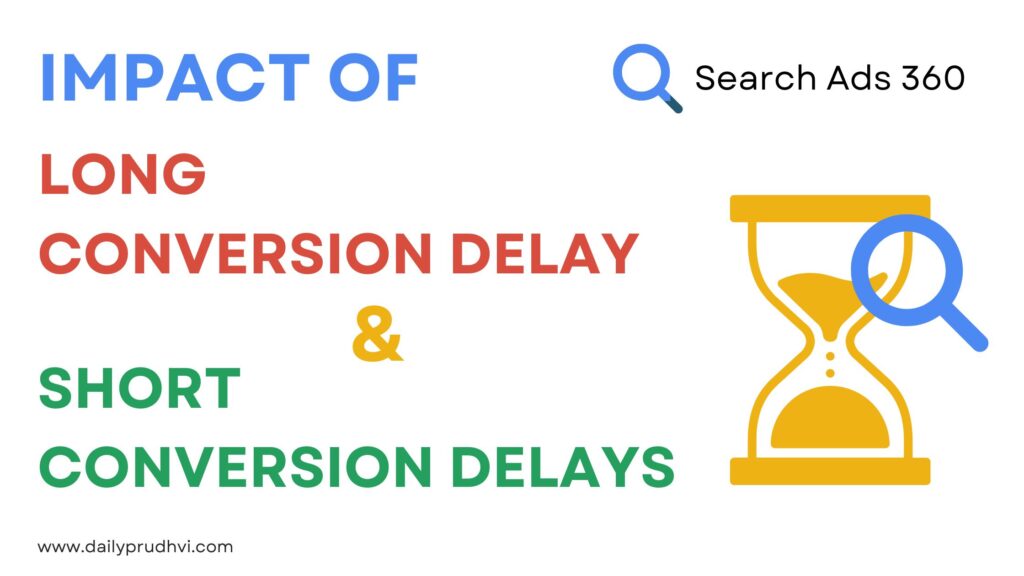
We know Conversion Delay is the time gap between a user interacting with an ad and when that interaction leads to a tracked conversion. Conversion, such as signup, lead, sale..so on.
Long and short conversion delay provides insights into customer behavior and inform how we could optimize our ad campaigns.
Read more about conversion delay at: What is Conversion Delay and why is it important?
Long Conversion Delay and short conversion delay effects your campaigns strategies. If you notice your conversion delay is quite long (e.g., weeks), it may indicate that your product requires more research or a longer decision-making process. You may want to invest in retargeting campaigns or email follow-ups to keep users engaged during that time. Short Conversion Delay: If your conversion delay is short, you can analyze campaigns quicker and make adjustments in near real-time.
Now lets see in details about the Long conversion delay and short conversion delay:
Long Conversion Delay:
- If you observe that it takes a long time (e.g., weeks) for users to convert after interacting with your ad, it suggests that the product or service you’re advertising requires more time for users to make a decision. This is often the case with high-cost items or products that require research, such as financial services, expensive electronics, or B2B solutions.
- Impact: Long delays indicate that users are taking their time to evaluate options, compare prices, or conduct research before committing to a purchase or conversion.
- What you can do:
- Retargeting Campaigns: These are essential in maintaining engagement with users who have interacted with your ad but haven’t converted yet. Retargeting allows you to show ads to these users to remind them about your product or service, guiding them back to the conversion path.
- Email Follow-Ups: Sending follow-up emails with offers, reminders, or additional information can nurture potential leads over time and help shorten the conversion cycle. This is particularly useful for keeping your brand top-of-mind during the long decision-making process.
Short Conversion Delay:
- If users convert quickly after interacting with your ad (e.g., within minutes, hours, or a few days), it indicates that the product or service you’re promoting has a shorter decision-making cycle. Typically, this applies to low-cost items, impulse purchases, or products where users don’t need to invest much time in researching.
- Impact: With a short delay, it’s easier to evaluate campaign performance and adjust your advertising strategy more frequently since the results are available faster.
- What you can do:
- Quicker Campaign Analysis: With shorter delays, you can gather data in near real-time and rapidly test different ad creatives, targeting options, and bidding strategies. This means that you can optimize your campaign sooner based on performance metrics.
- Adjust Budget & Strategy Faster: A shorter delay allows you to spot underperforming ads quickly and shift your budget to higher-performing ones, maximizing return on investment (ROI) without waiting weeks to analyze the impact.
I hope this article helped you understand the difference between Long conversion delay and short conversion delay.
Let me know your thoughts. Have a great day.
